In the fast-evolving world of fiber optic networks, reliability and performance are key. As a procurement manager, selecting the right fiber patch cable isn’t just about specs on paper—it’s about making informed decisions that impact long-term network stability, maintenance efficiency, and scalability. One of the most widely used connectors in fiber communication is the SC/UPC Fiber Patch Cable, known for its simplicity, low insertion loss, and affordability. Whether you’re sourcing for data centers, FTTH rollouts, telecom backbones, or enterprise networks, understanding what makes a high-quality SC/UPC fiber patch cable is essential.
This guide will explore the important factors procurement managers should consider when sourcing SC/UPC fiber patch cables, from technical specifications and connector types to construction materials, quality control, and supplier credibility. As a leading SC/UPC Fiber Patch Cable manufacturer, we aim to provide insights that help streamline your procurement process and reduce long-term operational costs.
What is an SC/UPC Fiber Patch Cable?
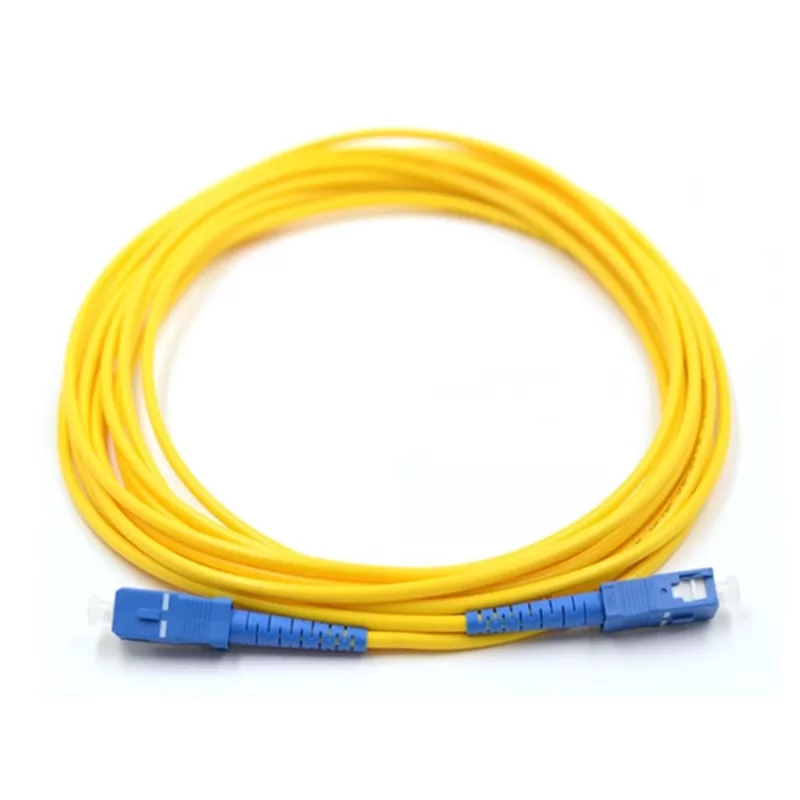
An SC/UPC fiber patch cable is a type of optical fiber jumper that uses an SC (Subscriber Connector) connector with a UPC (Ultra Physical Contact) polished ferrule. The SC connector is a push-pull style connector with a locking tab for secure connections, widely used in data communications, telecom networks, and optical testing. UPC polishing ensures better surface contact between connectors, resulting in low insertion loss and minimal signal reflection.
SC/UPC connectors are typically used in singlemode fiber networks (OS2), but can also be found in multimode setups (OM1/OM2/OM3/OM4) depending on the application. These cables are commonly used to connect optical equipment such as OLTs, ONTs, switches, patch panels, media converters, and transceivers.
Key Specifications to Evaluate
Before placing a bulk order, procurement managers must understand the technical parameters that define a high-performance SC/UPC fiber patch cable.
- Insertion Loss (IL)
Low insertion loss is critical for maintaining optical signal strength. Industry standards for SC/UPC singlemode cables require IL ≤ 0.3 dB, while premium cables can achieve ≤ 0.2 dB. - Return Loss (RL)
Return loss measures the amount of reflected signal. SC/UPC connectors typically offer RL ≥ 50 dB, suitable for most access and distribution networks. - Fiber Type and Mode
Determine whether your network requires singlemode (OS2) or multimode (OM1–OM4) cables. Singlemode cables are ideal for long-distance, high-bandwidth applications. - Cable Jacket Type
Common jacket materials include PVC, LSZH (Low Smoke Zero Halogen), and OFNP (Plenum Rated). For indoor use, LSZH is preferred for safety. For data centers, OFNP cables meet stringent fire codes. - Cable Diameter and Structure
Typical diameters range from 1.6mm to 3.0mm. Simplex (single fiber) or duplex (two fibers) options are available depending on equipment and routing requirements. - Polishing Type
SC connectors come in PC, UPC, and APC versions. For low-reflection, cost-effective setups, SC/UPC is the go-to choice. Avoid mixing UPC and APC as this leads to performance degradation. - Connector Durability and Mating Cycles
High-quality SC/UPC connectors are rated for at least 500–1000 mating cycles. This ensures longevity in patch panel environments or areas with frequent reconnections.
Quality Control and Compliance
Ensuring that every cable meets international quality standards is critical for network reliability. Procurement teams should request the following from their supplier:
- 100% Factory Optical Testing for IL and RL
- Certification Reports (IEC, RoHS, CE, GR-326 compliance)
- Visual Inspection for Ferrule Cleanliness
- Batch Traceability and Serial Numbering
Manufacturers like us conduct rigorous testing including 3D interferometer tests, end-face geometry analysis, tensile strength checks, and return loss certification before shipment. This ensures you receive SC/UPC fiber patch cable that meet or exceed industry benchmarks.
Customization Options for SC/UPC Fiber Patch Cable
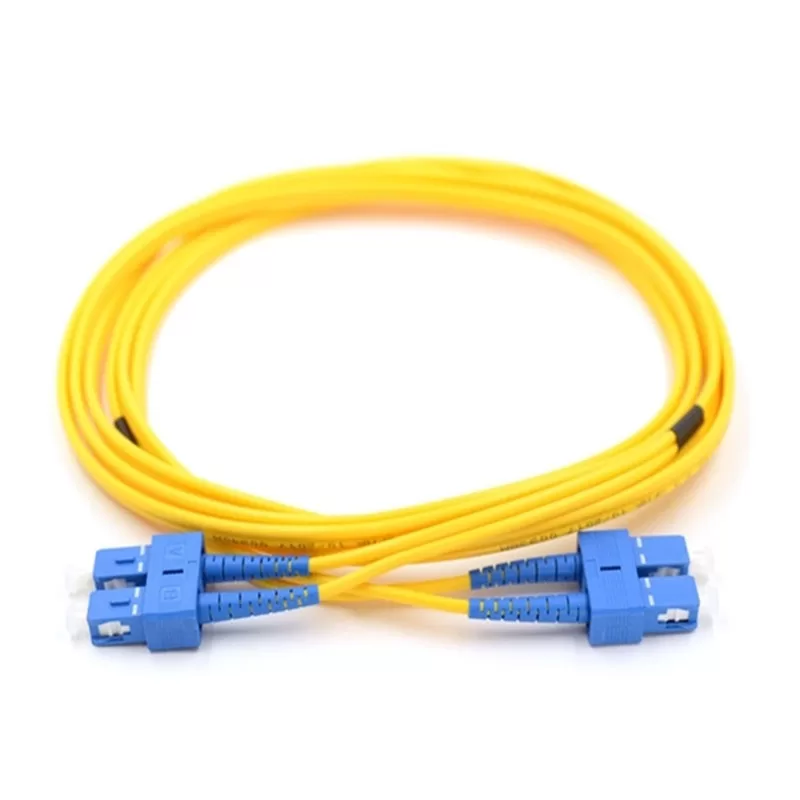
Depending on your deployment needs, procurement managers may benefit from customized SC/UPC fiber patch cable solutions:
- Length: Standard options range from 0.5m to 50m. Custom lengths are available.
- Color Coding: Yellow for singlemode, orange/aqua for multimode—color coding simplifies on-site installation.
- Cable Jacket Material: LSZH, PVC, or armored for harsh environments.
- Connector Combinations: SC to SC, SC to LC, SC to FC, etc. for hybrid interface compatibility.
- Labeling and Branding: OEM labels, QR codes, laser engraving for asset management.
Application Scenarios for SC/UPC Fiber Patch Cable
SC/UPC fiber patch cable is used across a wide range of fiber optic infrastructure:
- FTTH (Fiber to the Home)
Used to connect ONT units in homes to fiber access points or splitter boxes. LSZH jacketed cables are ideal for indoor use. - Data Centers
SC/UPC patch cords are used for switch-to-patch panel connections, providing clean and stable connectivity with minimal loss. - Telecom Central Offices
SC/UPC jumpers link optical distribution frames (ODFs) with network equipment, enabling modularity and maintenance flexibility. - Enterprise Networks
Deployed for backbone cabling in campus or office networks requiring stable long-distance fiber runs. - Test and Measurement
Used to connect devices during OTDR or power meter testing due to consistent performance and secure latching mechanism.
How to Choose a Reliable SC/UPC Fiber Patch Cable Manufacturer
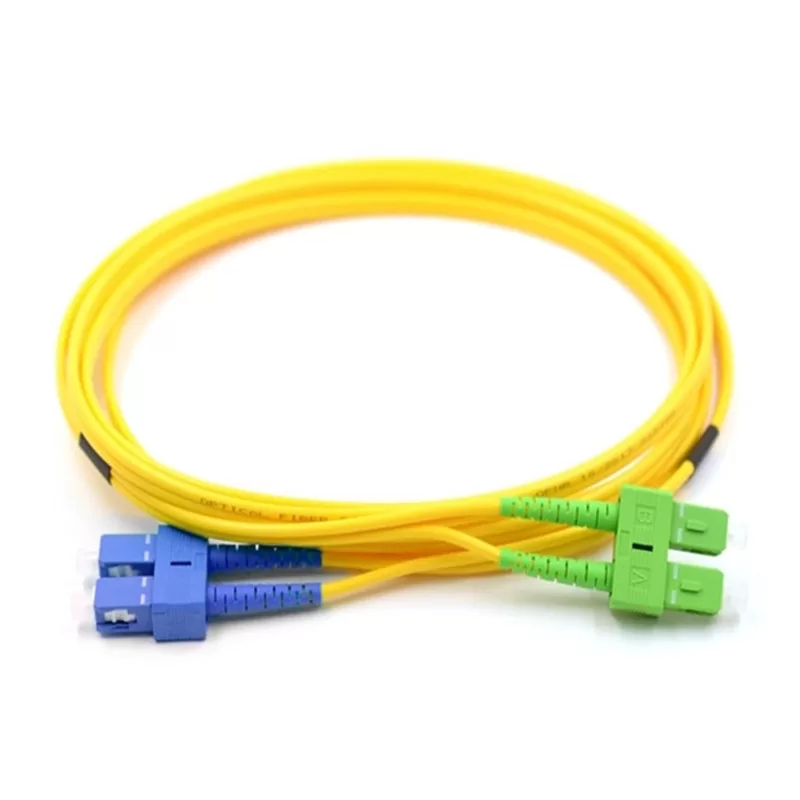
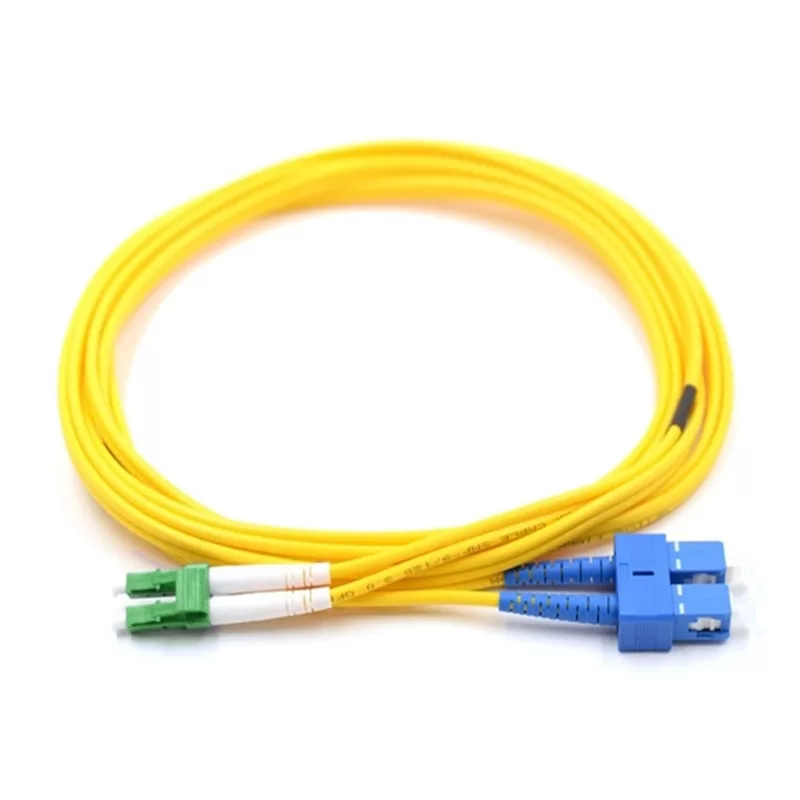
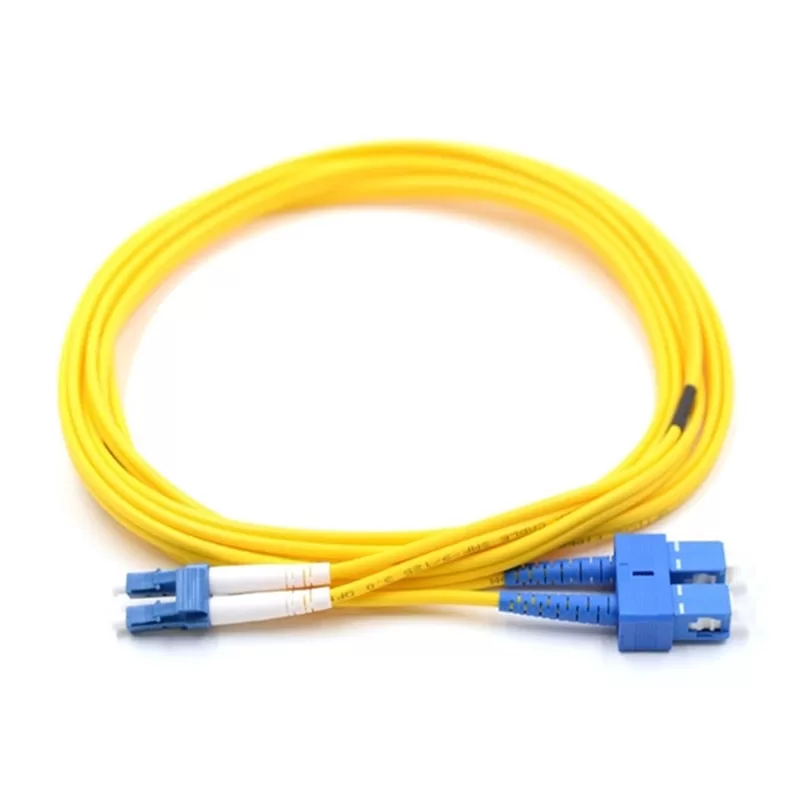
Sourcing from a trusted manufacturer minimizes risk, improves consistency, and reduces overall network cost of ownership. Here are key factors to evaluate:
- Experience & Reputation: How long has the supplier been manufacturing SC/UPC fiber patch cables? Do they work with major ISPs or telcos?
- Certifications & Quality Assurance: Is the production ISO certified? Are materials RoHS and CE compliant?
- Production Capabilities: Can the supplier fulfill high-volume orders quickly? Do they support custom builds with short lead times?
- Customer Support: Do they offer technical support, product documentation, or samples?
- Global Shipping & Logistics: Can they meet your delivery schedule and support urgent deployments?
We have over 10 years of experience manufacturing SC/UPC fiber patch cables for telecom operators, ISPs, and enterprise integrators worldwide. Our factory offers full OEM/ODM customization, in-house R&D, and complete pre-shipment testing, ensuring consistent performance across all cable batches.
Final Procurement Tips
- Always match patch cable polish type with adapter or transceiver (e.g., SC/UPC with SC/UPC).
- Confirm that all cables are dust-capped and individually bagged before shipment.
- For field deployments, consider armored SC/UPC fiber patch cable for added protection.
- Request test reports with every batch to verify IL and RL compliance.
- Plan for extra spare cables during procurement to handle future changes or replacements.
Conclusão
Escolhendo o certo SC/UPC Fiber Patch Cable isn’t just a technical decision—it’s a strategic one. The right product ensures seamless connectivity, lowers maintenance costs, and supports long-term scalability of your fiber infrastructure. By working with a trusted manufacturer and focusing on key performance metrics, procurement managers can confidently supply their network teams with cables that deliver real-world reliability and performance.
As a professional SC/UPC Fiber Patch Cable manufacturer, we are here to support your needs with high-quality products, fast delivery, and full technical support. Whether you’re managing a metro network upgrade, data center expansion, or fiber to the home rollout, we have the capacity and expertise to meet your demands.
Ready to source SC/UPC fiber patch cable that meet your project’s requirements? Contact us today for a quote or sample.
Our Email: [email protected]
